Downloaded 69 times






![THE NAIVE ALGORITHM
T[n]=T[0,1…n-1]
P[m]=P[0,1…m-1]
NAIVE-STRING-MATCHER(T,P)
1) n = T.length
2) m = P.length
3) for s=0 to n-m
4) if P[0…m-1]==T[s+0….s+m-1]
5) print” Pattern occurs with shift ” s](https://image.slidesharecdn.com/stringmatchingalgorithms-thenaivealgorithm-180718073714/75/String-Matching-Algorithms-The-Naive-Algorithm-7-2048.jpg)
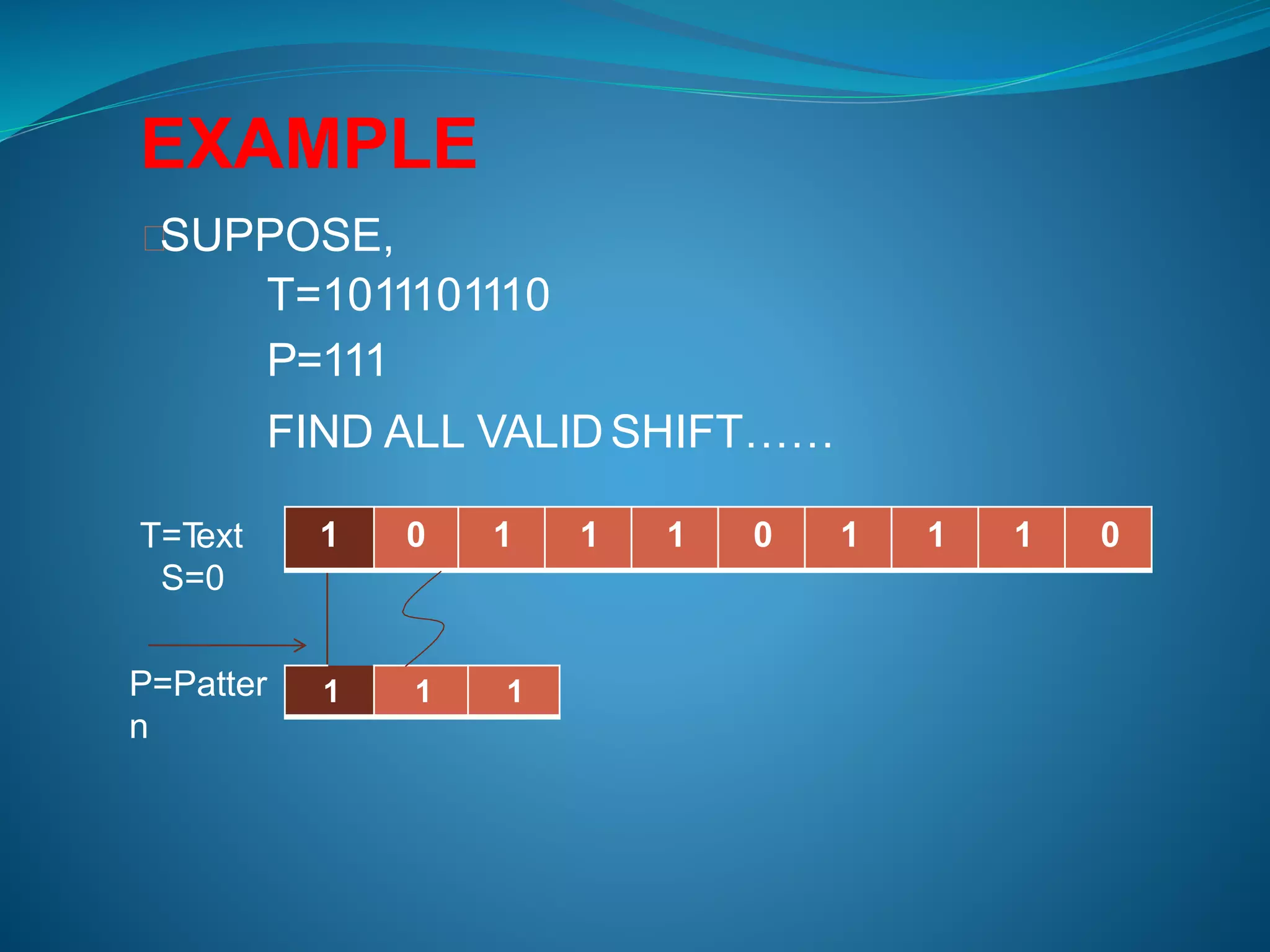
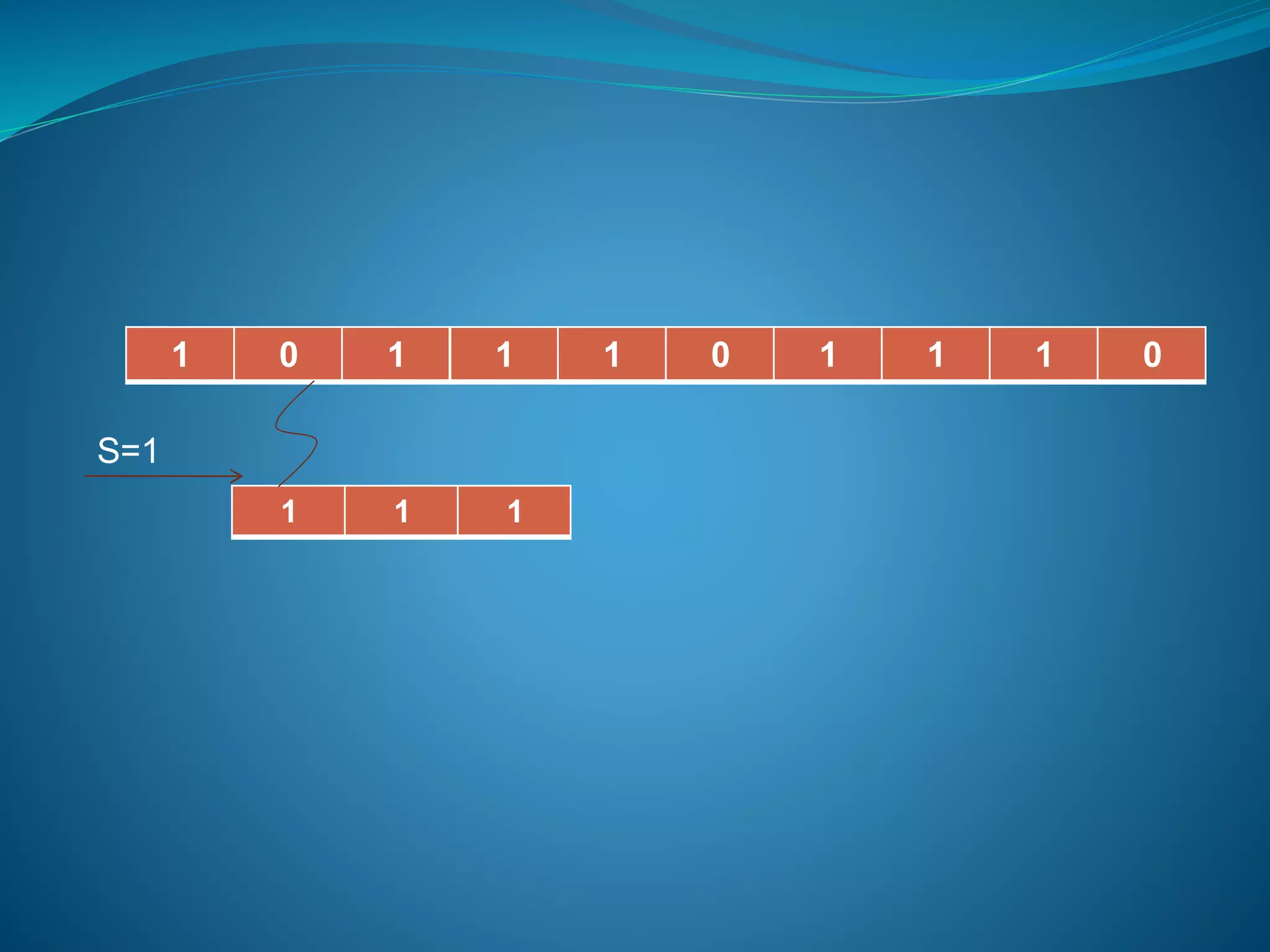
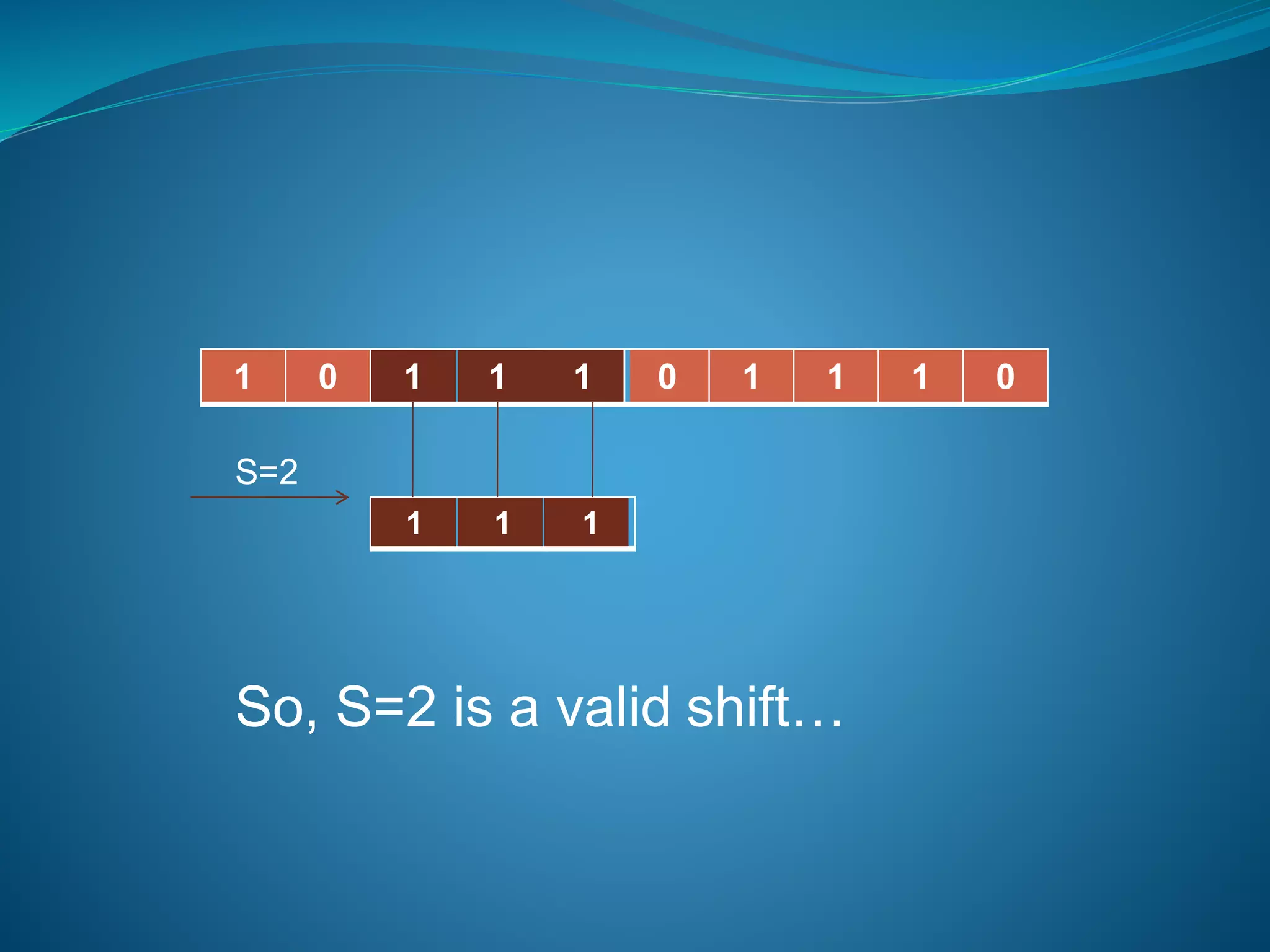
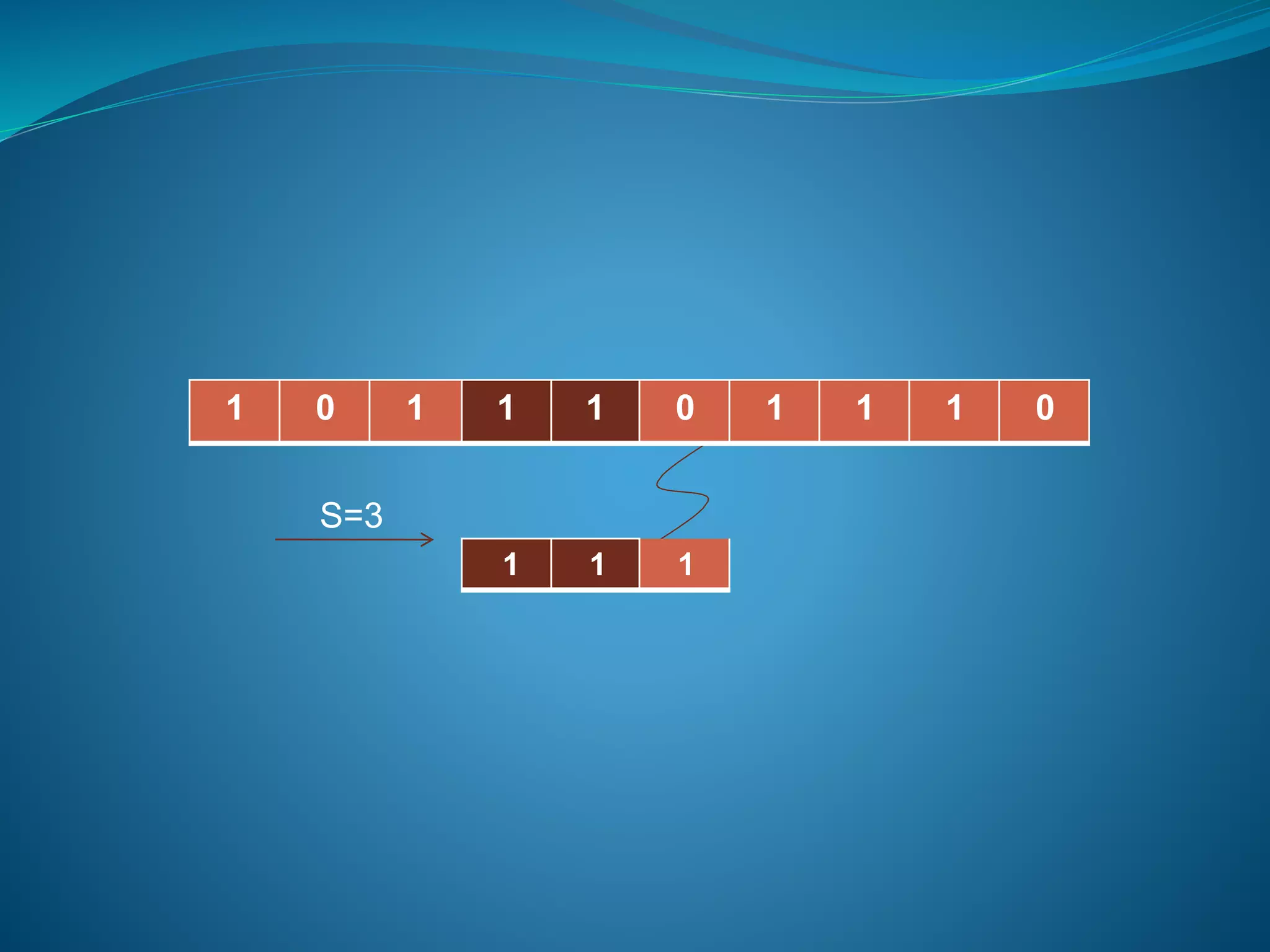
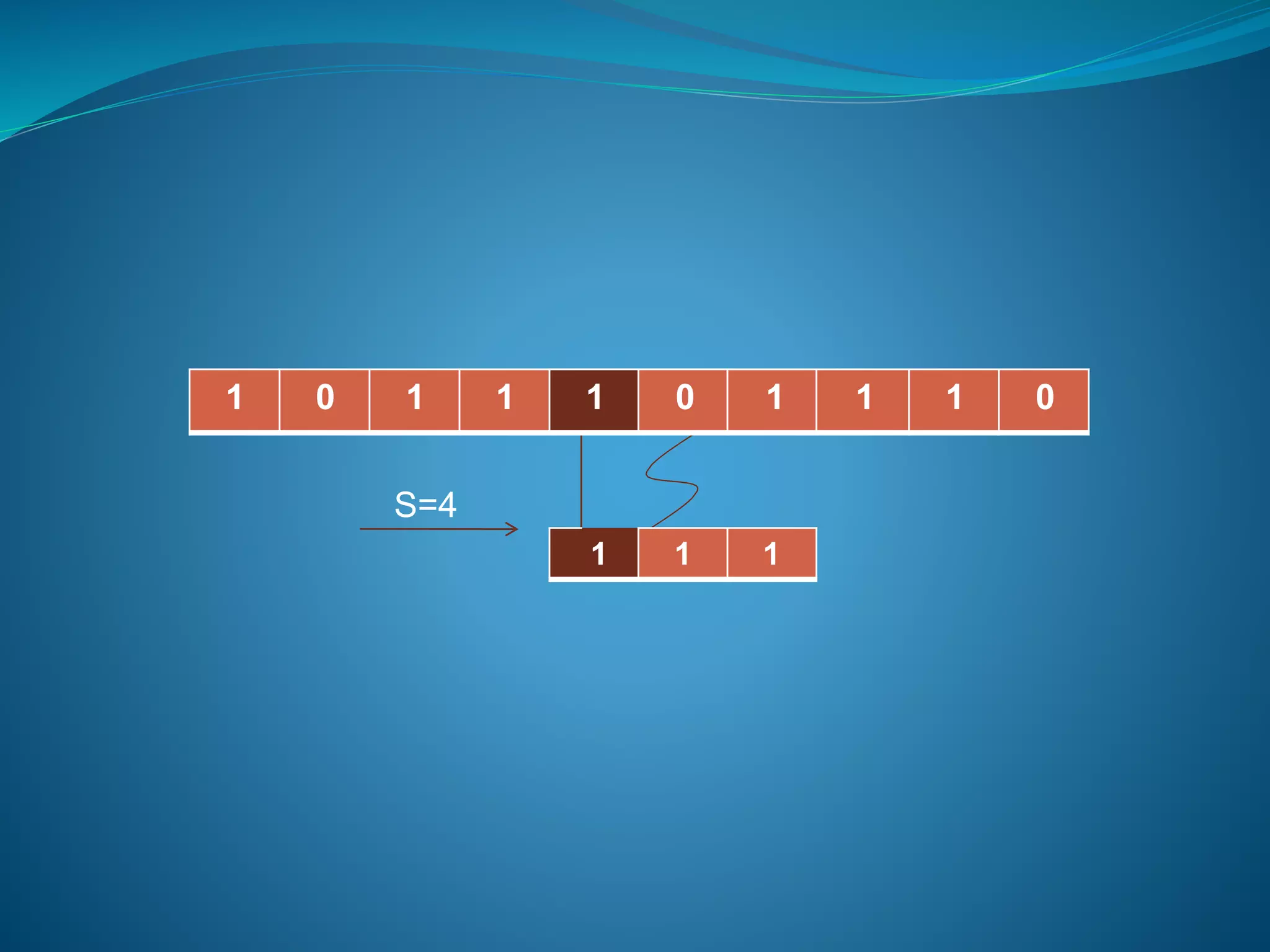
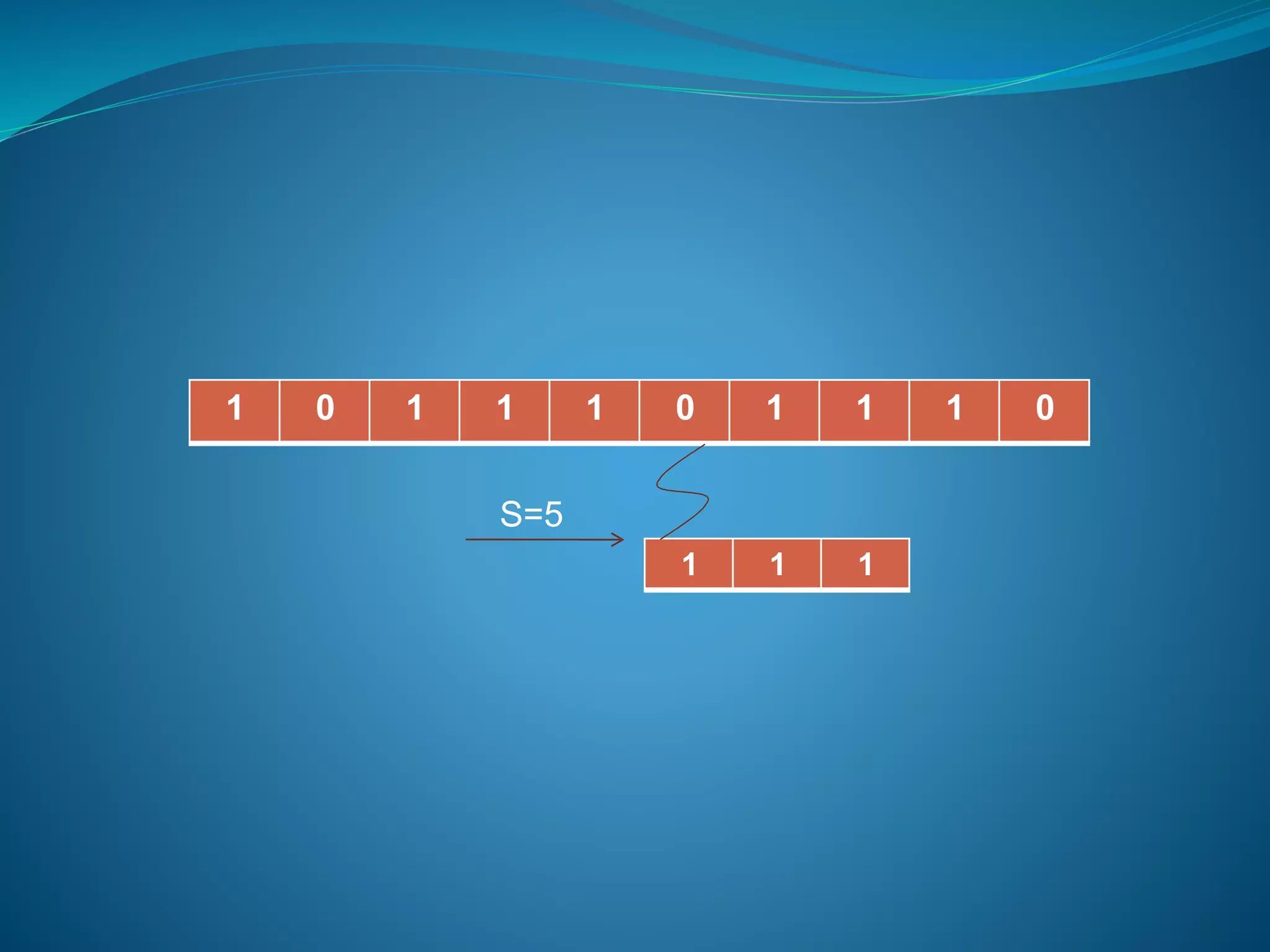
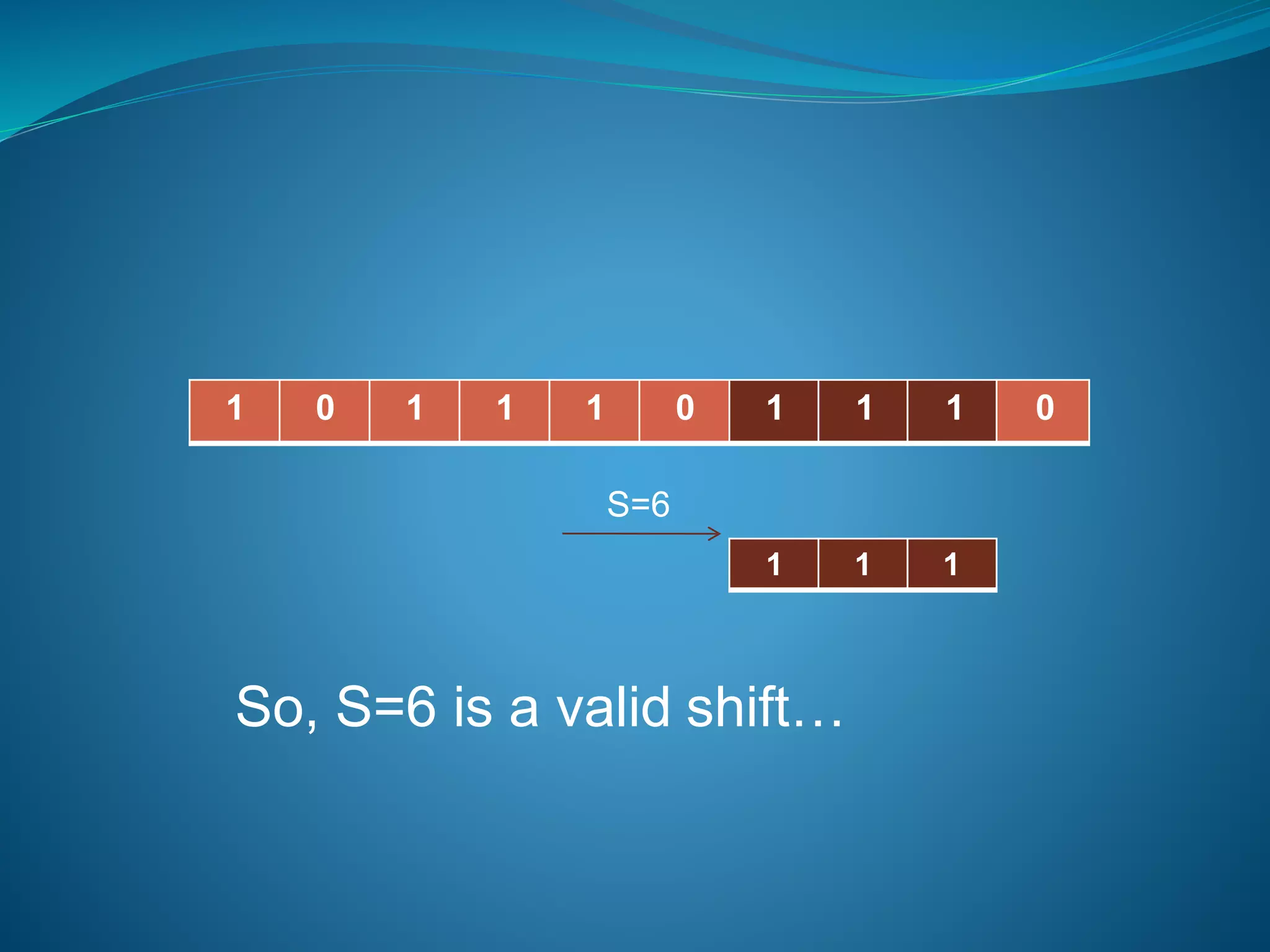
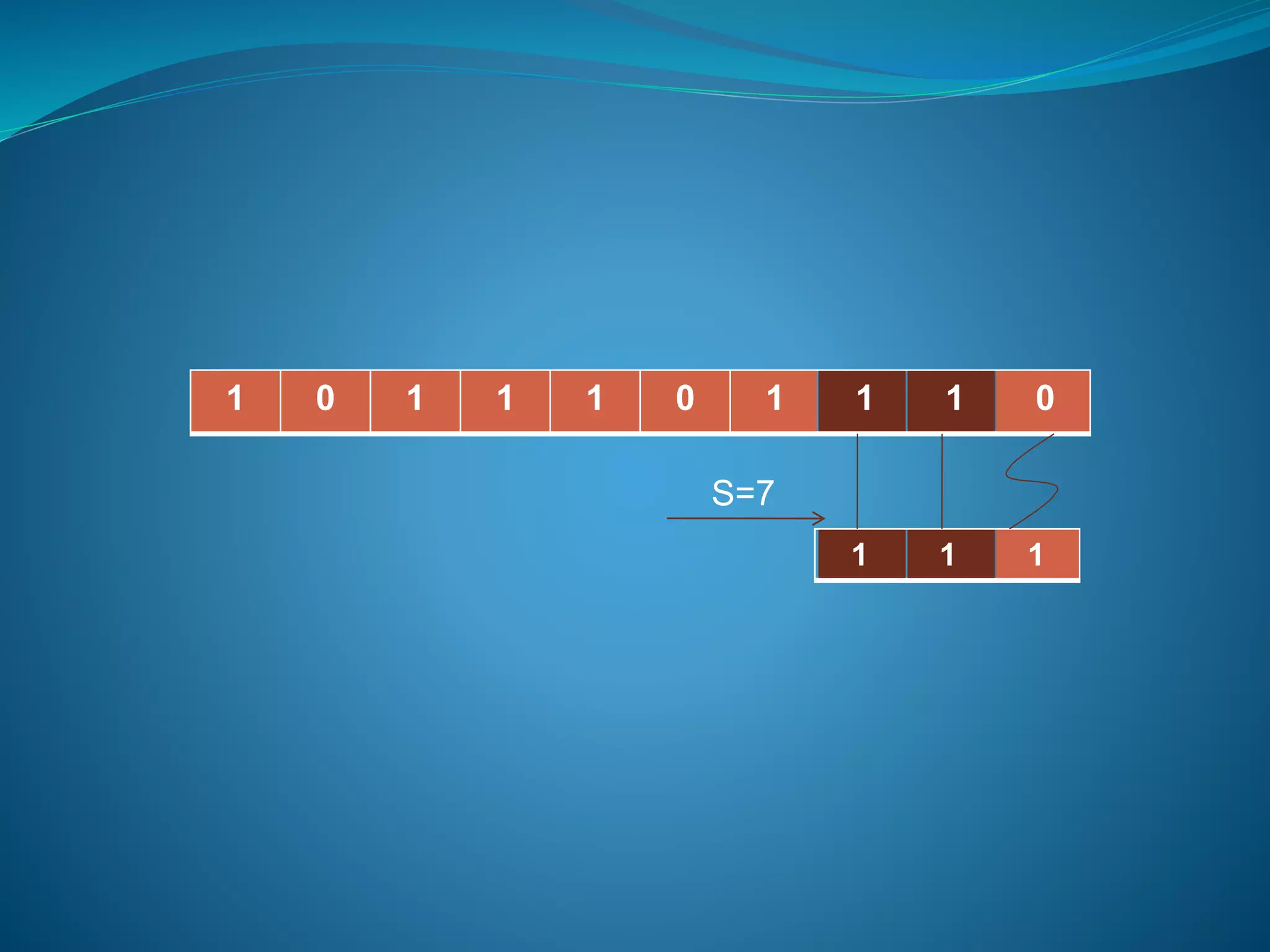


String matching algorithms are used to find patterns within larger strings or texts. The example shows a text string "A B C A B A A C A B" and a pattern "A B A A" with a shift of 3. The naive string matching algorithm is described which compares characters between the text and pattern from index 0 to the string lengths to find all valid shifts where the pattern occurs in the text.






![THE NAIVE ALGORITHM
T[n]=T[0,1…n-1]
P[m]=P[0,1…m-1]
NAIVE-STRING-MATCHER(T,P)
1) n = T.length
2) m = P.length
3) for s=0 to n-m
4) if P[0…m-1]==T[s+0….s+m-1]
5) print” Pattern occurs with shift ” s](https://image.slidesharecdn.com/stringmatchingalgorithms-thenaivealgorithm-180718073714/75/String-Matching-Algorithms-The-Naive-Algorithm-7-2048.jpg)









Overview of string matching algorithms with example sequences and presenter information.
Definition of string matching algorithms in computer science and illustration of a string matching problem.
Introduction to different types of string matching algorithms including the Naive and Rabin-Karp algorithms.
Explanation of the naive string matching algorithm including its methodology and step-by-step process.
Example illustration of the naive algorithm with the binary string T and pattern P, identifying shifts.